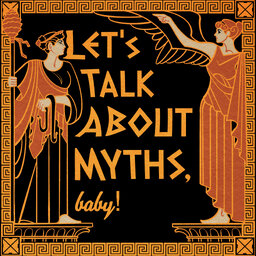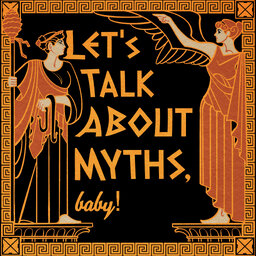Conversations: The Things They Found in Tombs, Bronze Age Mycenae w/ Dr Kim Shelton
Liv is joined by Dr Kim Shelton to dive deeper into the real world of Bronze Age Mycenae and all we've learned from what they left behind. Learn more about Dr Shelton's work here.
Help keep LTAMB going by subscribing to Liv's Patreon for bonus content!
CW/TW: far too many Greek myths involve assault. Given it's fiction, and typically involves gods and/or monsters, I'm not as deferential as I would be were I referencing the real thing.
Attributions and licensing information for music used in the podcast can be found here: mythsbaby.com/sources-attributions.
 Let's Talk About Myths, Baby! Greek & Roman Mythology Retold
Let's Talk About Myths, Baby! Greek & Roman Mythology Retold


